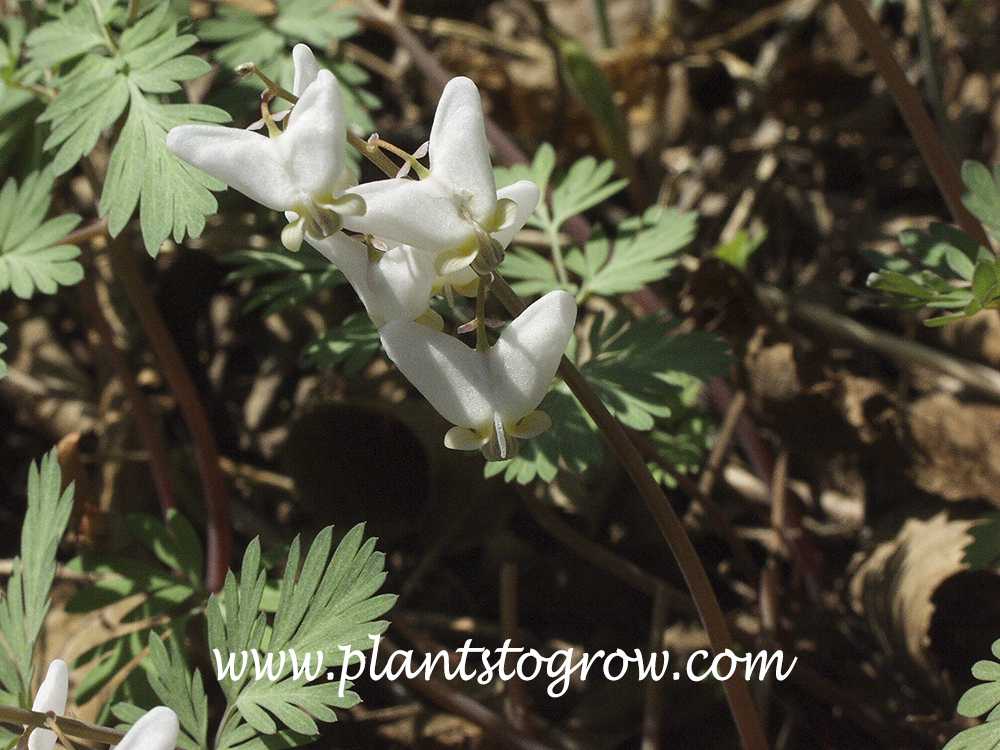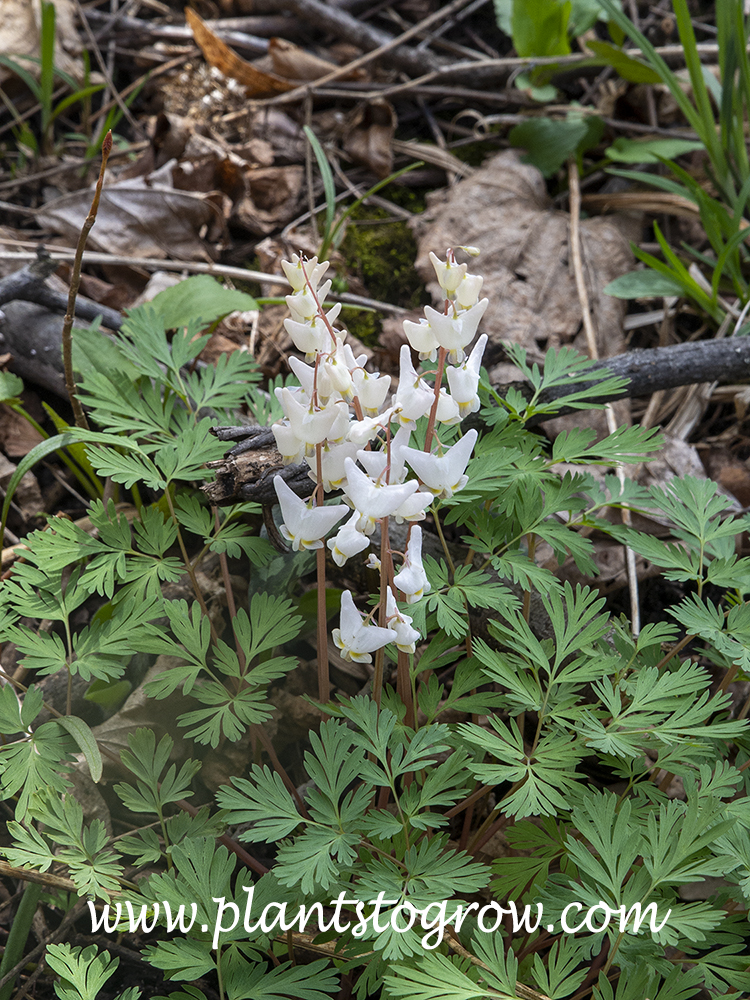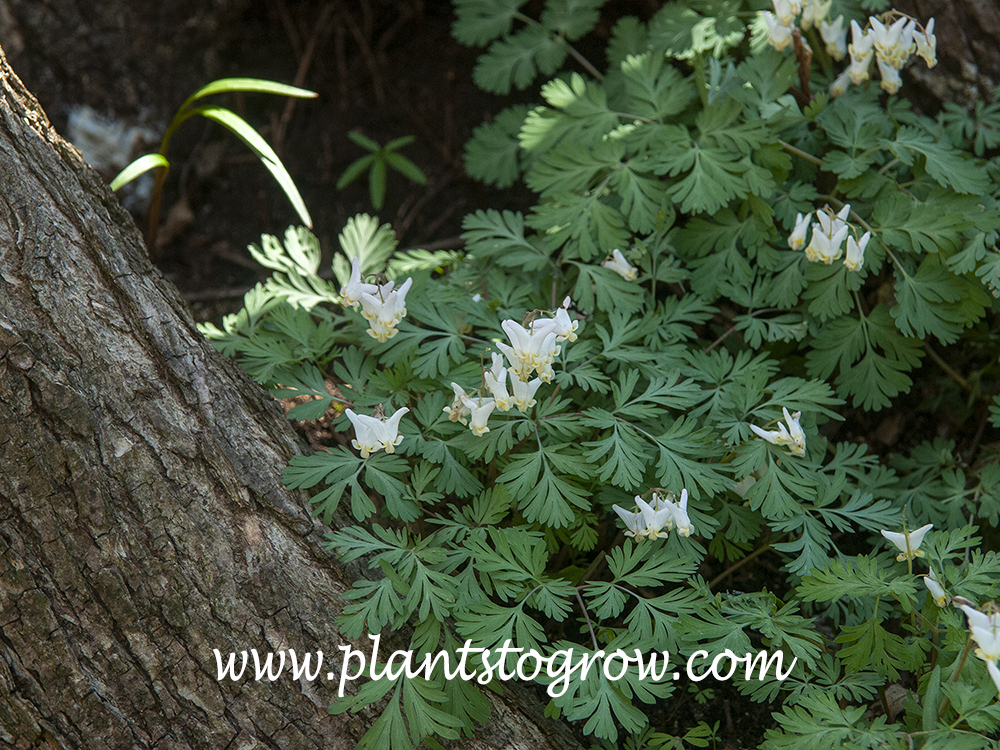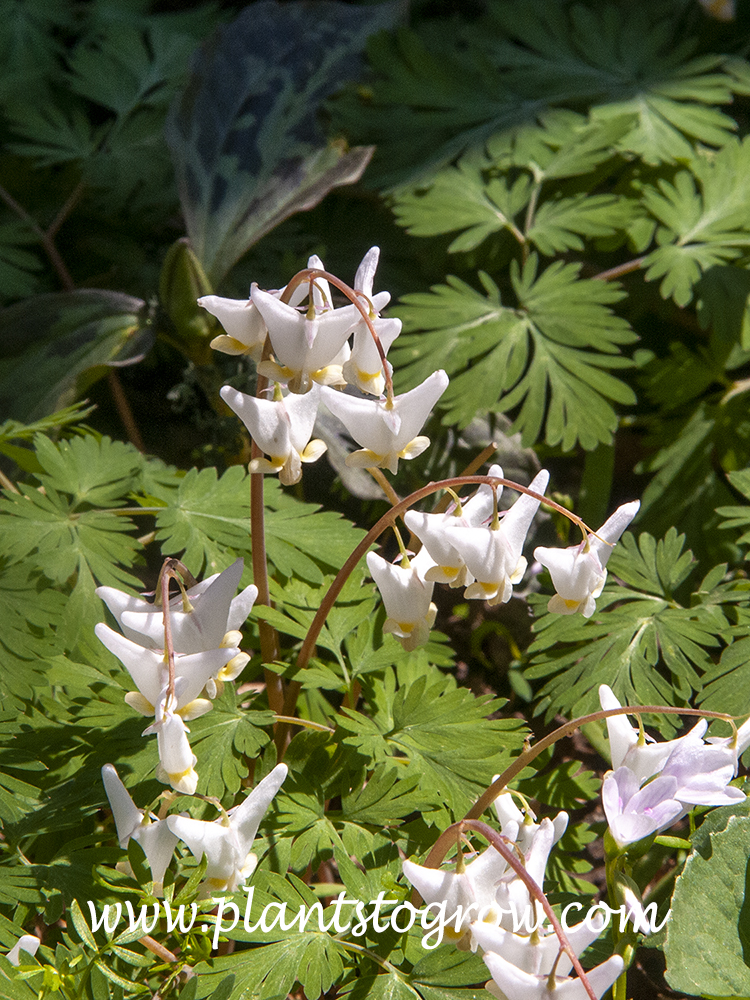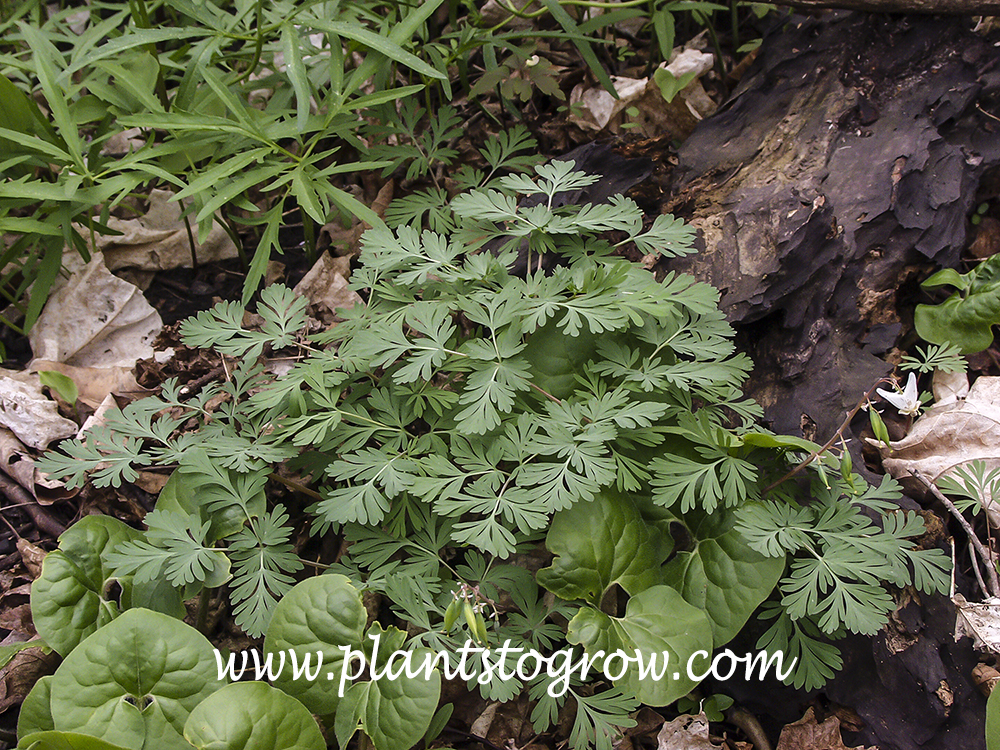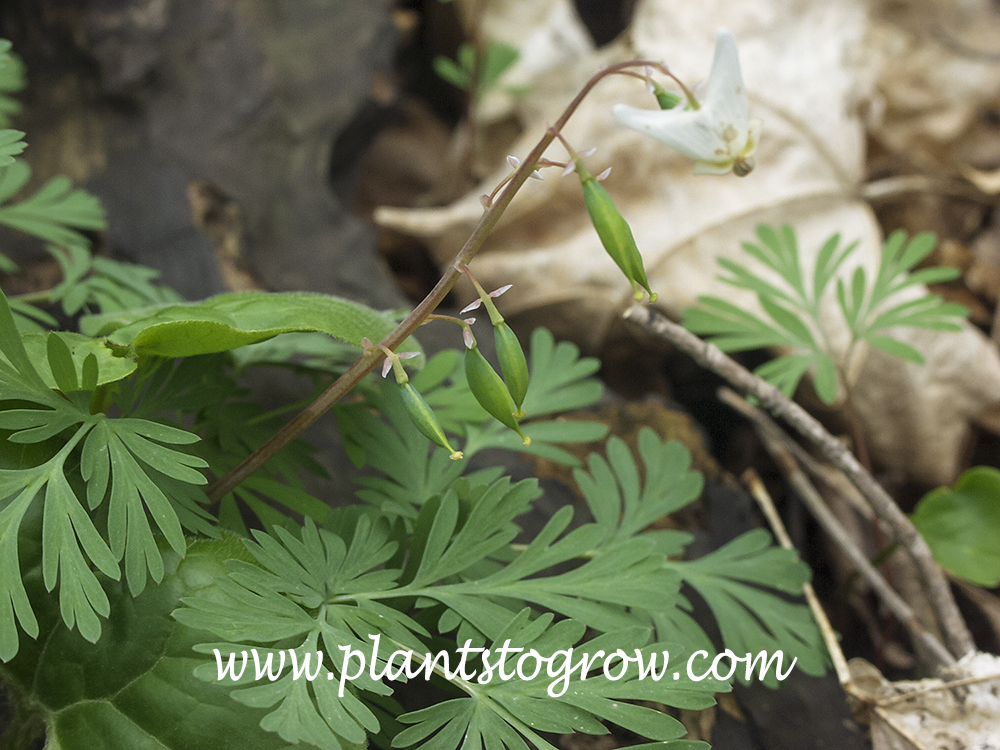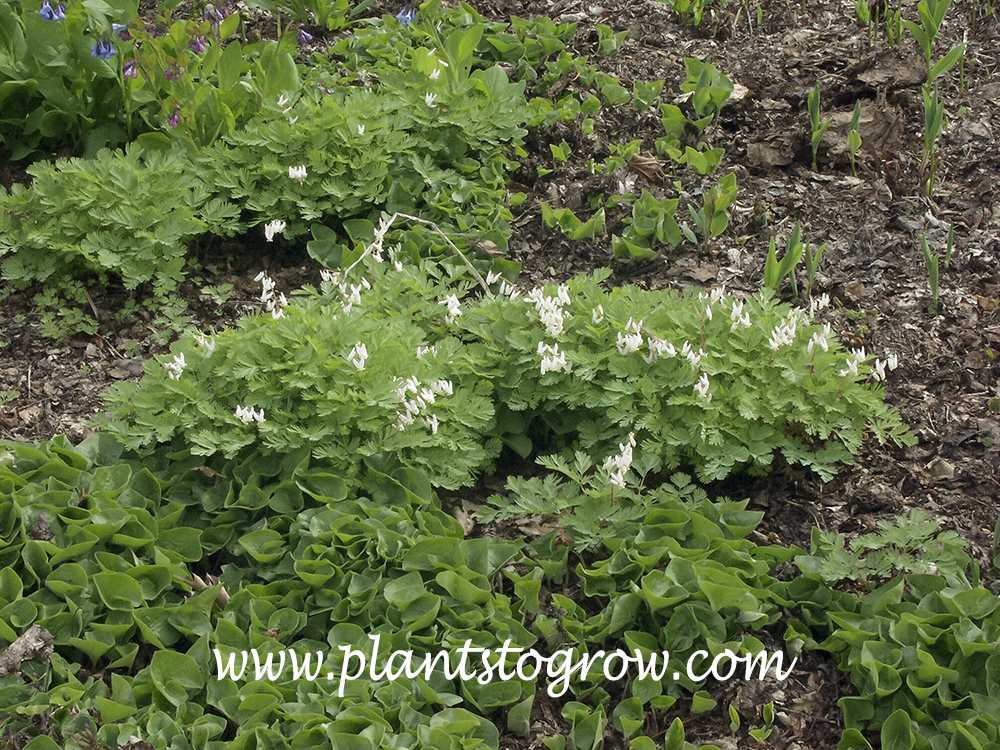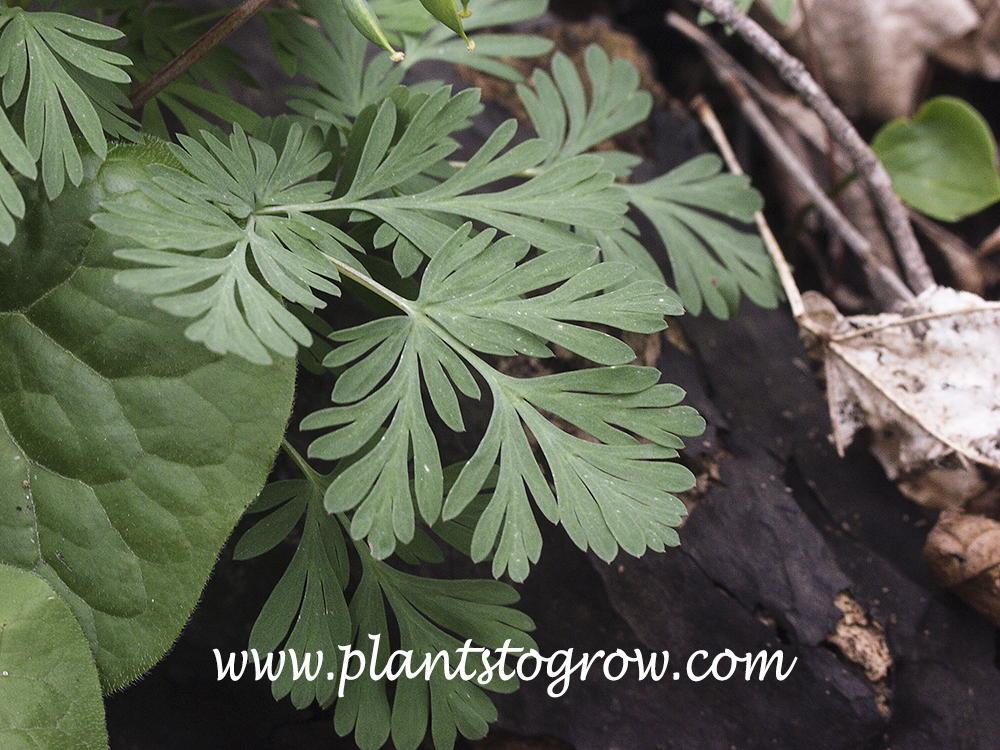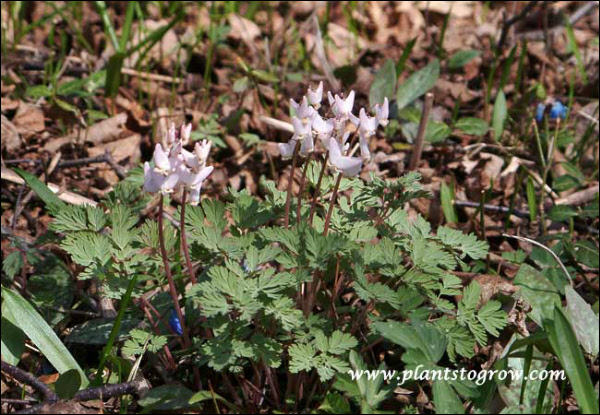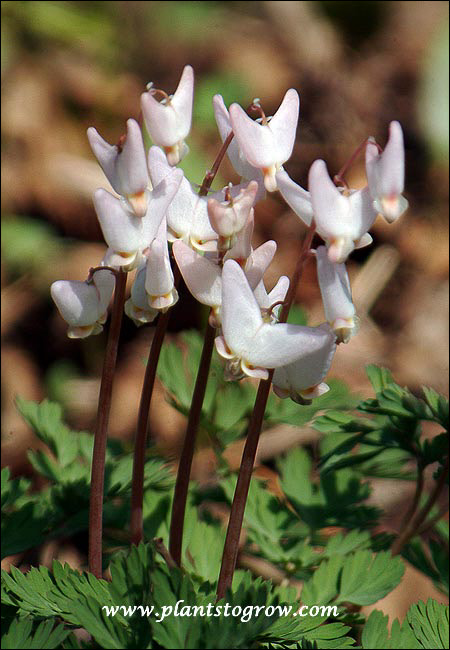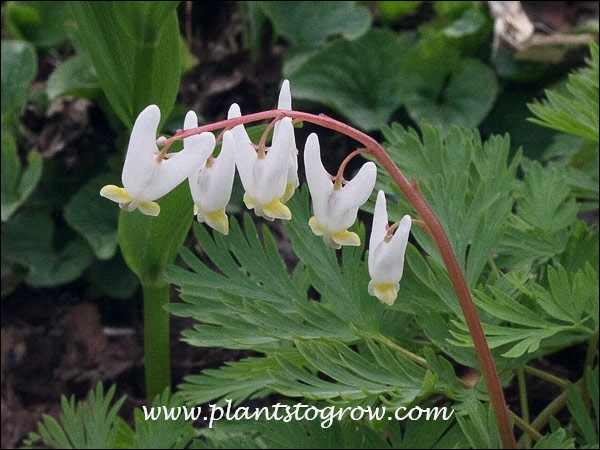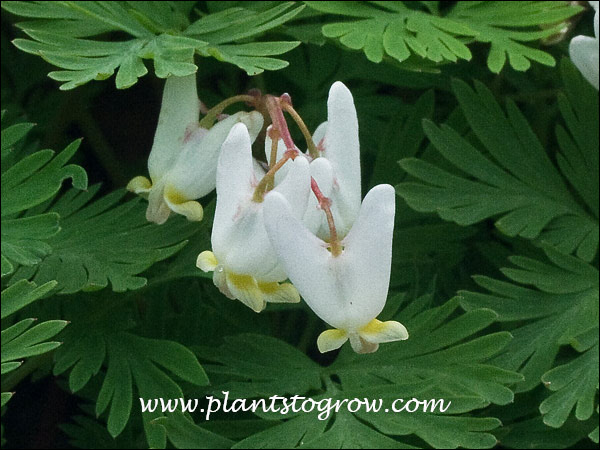| Description | Dutchman's Breeches (Dicentra cucullaria) is a beautiful spring-blooming ephemeral wildflower. The leaves have a soft, feathery appearance, and the white to pale pink flowers hanging from a thin stalk add to the charm of this wildflower. |
|---|---|
| Plant Type | Perennials Hardy, Wild Flowers, Site author's observations |
| Hardiness Zone | (4)5 |
| Sunlight | shaded, deciduous forests |
| Moisture | moist |
| Soil & Site | rich, humus rich, slightly acid to neutral ph 6.0-7.0 |
| Flowers | The white, sometimes faintly pink, is 5/8-3/4 inch. Two inflated outer petals form the legs. Usually, 3-7 flowers are found on the nodding stalk, which arises from the root. Flowers are held above the foliage. Blooms April through May. This plant is pollinated in the early spring by Bumblebees. They have mouth parts long enough to get deep into the flower and reap the rewards of the nectar. |
| Fruit | It has oblong fruit that splits along the center when ripe. Seeds have elaiosomes, which are fleshy structures rich in fats and proteins. The ants (myrmecochory) collect the seeds and return them to the nest to eat the elaiosomes. This helps disperse the seeds. |
| Leaves | compound leaves, deeply dissected, arise from the rootstock, greenish-gray to bluish, soft feathery texture |
| Stems | Seeds have elaiosomes, which are fleshy structures rich in fats and proteins. The ants (myrmecochory) collect the seeds and return them to the nest to eat the elaiosomes. This helps disperse the seeds. |
| Roots | roots are poisonous. |
| Dimensions | around 10" tall |
| Propagation | division of the crown and roots |
| Misc Facts | The genus name Dicentra is derived from the Greek word meaning two spurs. The species name refers to having sides or apex recurred inward to form a hood. Important as a bumblebee food source. AKA; Bicuculla cucullaria, Dicentra cucullaria var. occidentalis, Dicentra occidentalis, Dutchmans Britches |
| Author's Notes | I have seen this plant growing in small drifts in ephemeral plant sites. These sites are full sun, spring, and shade as the leaves on the trees fill out. |
| Notes & Reference | #13-Growing Woodland Wildflowers, #41-Wildflowers of Wisconsin, #61-How to Recognize Wildflowers, #62-Northwoods Wildflowers, #115-Bleeding Hearts, Cordylis and Their Relatives (Mark Tebbit, Magnus Liden, Henrik Zetterlund), #289-Spring Wildflowers of the UW-Madison Arboretum (Andrew L. Hipp) |

Cart
